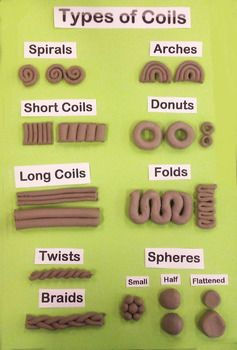Sacrality Among Museology?
- TheArtofMrsCastaldi

- Mar 8, 2019
- 3 min read

In this response paper, I will highlight perspectives of contemporary museology and the manipulation of the viewer experience through desacralization, fabrication, and influence of the curator. Authors Carolyn Dean and Joan R. Branham discussed in this analysis contribute to the contemporary theories to the function, significance, and fallacies of artifacts within the museum. This response paper more specifically explores the various connections between artistic implications, audience perception, and curator manipulation through the collection of case studies, narrative essays, analyses, and research from various scholars. The conclusion of this reading response values the cultural and educational experiences of the 21st century museums, and creating new paradigms for a globally-conscious future that understands and cultivates a mindset that puts an emphasis on the noun, rather than the adjective of primitive art through a holistic, naturalistic, and true form of informing the audience—not just through an installation set-up.
From the 1950s to the 21st century, the discipline of art history has had an unsettled constant conversation about the classification, display, and value of primitive art. According to Dean (2006), The Trouble with (the Term) Art, at this present time, there is “no globally acceptable definition of art”, but rather art historians tend to generalize all non-Western art and artifacts under the classification of primitive art (2006, p. 25). The following focus areas of art can be said to fall under the broad umbrella of primitive art: exotic art; tribal art; non-western art; the indigenous arts of Africa, Oceana, and the Americas; traditional art; industrial art; ethnic art; precivilized art; among others (Dean, 2006, p. 25). Thus, the cultural and educational practices of 21st century art historians and museum curators classifying such a broad genre as primitive art undermines taking a true globally-conscious approach to educating, exposing, and exhibiting artifacts, and relics and instead perpetuates a taciturn and laconic approach.
Museums are shifting the meaning and purpose of art through desacralization, fabricating anti-sacred space, and manipulating an experiential encounter via boutique lighting and set-up. According to Branham (1995), Sacrality and Aura in the Museum: Mute Objects and Articulate Space, “the hallmark of the modern museum has been the decontextualization of art works and the divestiture of their centuries-old, multi-layered meanings” (Branham, 1995, p. 33). Thus, 21st century museology allows for artifacts and objects to be naively taken out of context, manipulated, and falsely objectified. Whether consciously and/or sub-consciously, museum curators are using naïve relics, artifacts, and art pieces to set up galleries to elicit viewer emotions as if the piece was part of a broader context (i.e. the gallery) manufactured by the curator(s).
Although the lines may sometimes be blurred, installation art is truly thought to be a large-scale mixed-media type of art that creates an environment that engulfs the viewer in this unified experience by targeting a variety of senses. The barrier between the viewer and the artwork does not exist, but rather the viewer immerses themselves subconsciously or consciously within the artwork. Installation art is meant to embrace and address the presence of the viewer through a heightened sensory state. To elicit a heightened sensory state, curators use boutique lightening, sound, and visual images, and blurbs to reach out and connect to the museum audience. Even if the intent is to educate, it is impossible for scholars to reconstruct an original, experiential, and universal reaction to objects that allow for and create a true sacred and originally purposed space.
Branham’s (1995) article Sacrality and Aura in the Museum: Mute Objects and Articulate Space, juxtaposes naïve objects (i.e. relics, artifacts, and deemed primitive art), and self-conscious art work (p. 35). Unlike naïve objects, self-conscious art work consists of art pieces that were meant to be exhibited and interact with an audience. Artists such as Judy Chicago, Cornelia Parker, Leandro Erlich, and Yayoi Kusama create art in which the curators are given explicit instructions how to re-create and display the body of work as intended. Thus, the museology practices of the 21st century thrive in environments where artists played an explicit role in the development and layout of the bodies of work; however, the curators should not and cannot take the same approach to as they do with designated installation works and naïve relics and artifacts.
21st century museology is the virtual conduit that strives to connect geographically disparate populations to provide a museum experience with the instantaneous ability to communicate, disseminate information, collaborate, and experience a variety of emotions. However, the averse implications that providing experiential museum experience has both a cultural and social impact on the audience that may not be worth the experience at the risk of creating a falsified experience through desacralization, fabrication, and manipulation of the curator.
References
Dean, C. (2006). The Trouble with (the Term) Art. Art Journal, 65(2), 24-32.
Branham, J.R. (1995). Sacrality and Aura in the Museum: Mute Objects and Articulate Space. The Journal of the Walters Art Gallery, 52, 33-47.


Comments